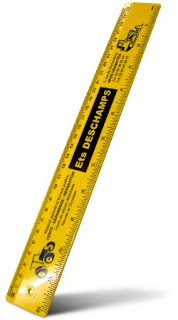What do you call a publisher that provides its advertisers original and data-rich consumer segmentation and preference research, a cross-platform communications strategy, customized executions, trade promotion support, qualified sales leads for considered-purchase goods, customer relationship management of those leads, and end-to-end analysis of a campaign’s returns?
 Very successful.
Very successful.
As the recession tightens its grip on the American economy, the media industry is discovering that the one segment not only holding its own among marketers but thriving is interactive. There are certainly numerous reasons for our relative strength. The gap between consumer time-spent and advertiser-spend is wider in interactive media than any other platform, an invitation for advertising share to shift this way, if only to reach equilibrium. Then, too, the availability of high-quality video on demand, an outgrowth of the broadband revolution, is proving increasingly attractive to the consumer-brand advertisers that had been relatively absent in the earlier days of interactive commerce.
But the larger reason for our vigor, as I argued in my last “clog,” is that interactive is a medium that can do it all — simultaneously. “Online marketing increasingly aims for awareness, consideration, preference and loyalty all at once,” The Economist wrote this week, in support of the IAB argument that interactive is the über-medium. “Internet advertising,” the publication proclaimed, “will be relatively unscathed in the downturn.”
This represents an historic shift in the nature and purpose of media companies. Where once a medium could thrive by serving as a simple channel for single-purpose advertising — as network television did for national brand advertising — today and in the future a multi-purpose services strategy likely will be the new normal for media companies.
And interactive publishers, the evidence below will show, have a considerable head start.
The Clicks Curse
Online publishers’ blessing begins with a bit of a curse: Advertisers historically have under-leveraged us for brand advertising.
 For better and for worse, interactive began largely as a direct-marketing vehicle. “Advertising is a science, but the limitations of the media turned it into an art,” Doubleclick co-founder, Chairman and Chief Executive Kevin Ryan insisted to me in 1999. Mr. Ryan was wrong: Advertising is neither science nor art, but a craft — a skill-based trade, infused by artistry and based on principles established through time, that aims to achieve practical objectives. Although he meant only to invoke the claim to accountability that was and is a strong suit of the medium, he and other early Internet pioneers so closely associated accountability with specific, immediate, measurable actions that marketers reflexively identified us as a direct-response channel.
For better and for worse, interactive began largely as a direct-marketing vehicle. “Advertising is a science, but the limitations of the media turned it into an art,” Doubleclick co-founder, Chairman and Chief Executive Kevin Ryan insisted to me in 1999. Mr. Ryan was wrong: Advertising is neither science nor art, but a craft — a skill-based trade, infused by artistry and based on principles established through time, that aims to achieve practical objectives. Although he meant only to invoke the claim to accountability that was and is a strong suit of the medium, he and other early Internet pioneers so closely associated accountability with specific, immediate, measurable actions that marketers reflexively identified us as a direct-response channel.
Even then, interactive industry leaders lamented the unthinking connection between interactive media and direct response. “There’s no correlation between click-through and brand building,” Rich Lefurgy, the founder of the Interactive Advertising Bureau, told me more than 10 years ago. “That sent us in the wrong direction.”
Indeed it did. A study recently released by our cousins at the European Interactive Advertising Association showed significant growth in selling-related “below-the-line” expenditures by marketers between 2006 and 2008 — a pattern consistent with what we’ve seen in the U.S. For example, the number of marketers saying they use the Internet to “generate sales” leaped 50 percent in that two-year period. The number saying they deployed interactive media to “influence purchase decisions” rose by one-third.
There’s nothing wrong with direct marketing. To the contrary, it’s a foundation of the marketer’s craft, and its $173.5 billion in annual expenditures dwarf those for any media-advertising segment. And because recessionary economies prompt marketers to shift budgets from brand-related media advertising toward direct-marketing and promotional activities, interactive’s strength in below-the-line functions has certainly helped to sustain our industry during this tough time.
But by concentrating our efforts on selling to the exclusion of branding, we have only limited ourselves. When the Booz & Co. consulting firm presented Phase II of their groundbreaking “Marketing-Media Ecosystem 2010” study, sponsored by the IAB together with the American Association of Advertising Agencies and the Association of National Advertisers, at our Annual Leadership Meeting last year, Booz media practice leader Chris Vollmer was unsparing in his criticism. Displaying a chart indicating that only 39 percent of U.S. interactive advertising revenues came from the nation’s top 50 advertisers — the advertisers with the largest stake in building and maintaining great sustainable brands — Mr. Vollmer told our members: “You have grown by picking the low-hanging fruit.”
Free-Rider Syndrome
 But there’s a much more pernicious consequence to interactive’s reputation as a direct response vehicle: the free-rider syndrome. Because clicks represent a small percentage of total advertising exposure online, marketers are gaining valuable brand lift — the kind that comes from frequent consumer exposure to advertising campaigns — for a fraction of what they typically would pay for effective branding campaigns. comScore recently published research showing that interactive display ad campaigns successfully boost marketer site visits (+46%), e-commerce transactions (+27%) and offline retail sales (+17%) — little of which is credited when cost-per-action (CPA) or cost-per-click (CPC) are used as the measure by which compensation will be calculated.
But there’s a much more pernicious consequence to interactive’s reputation as a direct response vehicle: the free-rider syndrome. Because clicks represent a small percentage of total advertising exposure online, marketers are gaining valuable brand lift — the kind that comes from frequent consumer exposure to advertising campaigns — for a fraction of what they typically would pay for effective branding campaigns. comScore recently published research showing that interactive display ad campaigns successfully boost marketer site visits (+46%), e-commerce transactions (+27%) and offline retail sales (+17%) — little of which is credited when cost-per-action (CPA) or cost-per-click (CPC) are used as the measure by which compensation will be calculated.
In other words, publishers are giving away that portion of the powerful marketer-brand equity they help to create for the price of a click. “With click rates for display ads now falling under 0.1%, I believe that publishers who sell display ads at a price that is based on the number of clicks could be engaging in one of the biggest giveaways since the invention of the medium,” comScore Chairman Gian Fulgoni wrote in a response to my last clog. “Publishers need to use the right metrics.”
(Mr. Fulgoni is speaking later this week at the “Empirical Generalizations in Advertising” conference at the Wharton Business School. His presentation, “How Online Advertising Works: Whither the Click?”, is available at 1-866-276-6972 or www.comscore.com/contact.)
I believe the free-rider syndrome will fade reasonably quickly from the scene — most likely after it kills a few good brands whose managers fooled themselves into believing they could sustain billion-dollar franchises on ten-cent direct-marketing efforts. After all, in most customer-supplier relationships, you do get what you pay for, certainly over the long-term. So if you optimize a campaign for immediate response, you are unlikely to gain the brand effects you are seeking.
Just ask the Detroit automakers, which for three decades, pushed sales by acclimating their consumers to a predictable, endless cycle of discounts, eroding virtually all affinity their audience once felt for their “timeless” brands.
Metrics That Matter
It’s beyond dispute that the lack of agreement on branding metrics has constrained the evolution of advertising, and probably harmed marketers, agencies and publishers.
Because of “inconsistent metrics, and a reliance on outdated media models, marketers are failing to tap the digital world’s full power,” McKinsey consultants Jacques Bughin, Amy Guggenheim Shenkan, and Marc Singer concluded after a recent study of global marketing decision-making. “Unless this problem is addressed, the inability to make accurate measurements of digital advertising’s effectiveness across channels and consumer touch points will continue to promote the misallocation of media budgets and to impede the industry’s growth.”
The McKinsey survey of 340 senior marketing executives worldwide, almost all of whom are using digital channels, is an astonishing exposé of marketing malpractice. Consider a small sample of its findings:
- Of companies stressing the importance of brand building, only half try to measure increases in brand strength from their digital efforts
- Fewer than one-third of companies attempt to measure the offline effects of online marketing
- Eighty percent of respondents use subjective judgments instead of quantitative analysis to allocate budget across media.
- Only half the companies using the Web as a direct-response vehicle use click-through rates — “the most basic of metrics,” as the consultants put it — to assess the effectiveness of their campaigns
The McKinsey judgment is harsh. When asked why they weren’t shifting more of their spending online, the marketers surveyed trotted out the habitual response: “insufficient metrics to measure impact.” But the real reason, the consultants found, is “a startling failure to measure.”
This research underscores a vital, valuable, and ultimately hopeful point: Assessing the effectiveness of interactive advertising for the purpose of media-mix allocation is not a measurement science problem — it’s a business-process problem. Science can take a long time; business processes can be designed, negotiated and, if the parties to them agree, implemented.
To be sure, there are multiple points of view about the metrics that matter. Many advertising doyens want to find a way to measure engagement, which the Advertising Research Foundation has defined as “turning on a prospect to a brand idea enhanced by the surrounding context.” But engagement is proving to have as many tributaries and navigation systems as the Amazon River and, at least for now, appears to be adding complexity to media analysis rather than simplifying it.
 Industry guru Jack Myers argues for a more pointed measure of effective brand advertising. In a fascinating and well-reasoned historical review, he says marketers “will have no choice but to accept measures of persuasion and motivation.” Several industry efforts to calculate advertising “view-through” — a metric that comScore’s Mr. Fulgoni, among others, favors, and which promises to relate subsequent consumer actions back to advertising exposure, even absent a click — may achieve this goal. But here, too, there are sectarian differences, with some measurement firms favoring cookie-based approaches to judging effective view-through, others promoting pixels, and still others favoring panels.
Industry guru Jack Myers argues for a more pointed measure of effective brand advertising. In a fascinating and well-reasoned historical review, he says marketers “will have no choice but to accept measures of persuasion and motivation.” Several industry efforts to calculate advertising “view-through” — a metric that comScore’s Mr. Fulgoni, among others, favors, and which promises to relate subsequent consumer actions back to advertising exposure, even absent a click — may achieve this goal. But here, too, there are sectarian differences, with some measurement firms favoring cookie-based approaches to judging effective view-through, others promoting pixels, and still others favoring panels.
There’s a great deal of evidence that the work to calculate brand effects is itself having a significant effect on marketer attitudes. The EIAA study, for example, found that more than 20 percent of marketers believe online is a very important vehicle for changing brand perceptions, up from 15 percent two years ago.
Marketer spending patterns also are changing. As Nielsen Online Senior Vice President Charlie Buchwalter noted after the IAB released its mid-term interactive revenue report for 2008, the four growth industries were packaged goods, automotive, telecommunications, and computing; together, they grew their online spend by nearly 30 percent over the equivalent period in 2007.
“Do you see what I see?” Mr. Buchwalter wrote. “These industries have consistently been the big overall ad spenders for a long, long time. Companies within these four industries make up 42 of the Top 100 national advertisers, and 52% of the advertising spend. And note that the two largest ad-spending industries, i.e. CPG and Auto, have been largely absent from the digital world until very recently.”
But to further propel growth, we have to reduce transactional confusion. Almost certainly, it will be necessary for industry leaders — Chief Executives and Chief Financial Officers of brand marketers, agencies, and publishers — to come together and reach agreement on the metrics that matter, and on ways to simplify the processes by which audience measurement is factored into media planning and buying. Happily, the IAB and the AAAA are attempting to do just that. Several months ago, we established a joint task force to attempt to systematize media measurement, based on objective. We call the initiative “Beyond Counting Exposures.”
The Services Imperative
But advanced publishers aren’t waiting for a set of magic metrics to instantaneously ignite a brand-advertising renaissance online. Instead, they have determined to build multiple paths to customer value and their own prosperity.
In my last clog, I noted the transformations that IDG and Cars.com had undertaken during the past decade. IDG recast itself from a magazine publishing company to a multi-line provider of such services as events marketing and premium lead generation, while still maintaining its leadership in print periodicals and online information. Cars.com, launched a decade ago as a classified advertising channel, remade itself into a lead-generation and customer relationship management resource for auto makers and their dealers.
 They are far from alone. Meredith Corp., for example, the venerable publisher of women’s magazines, has acquired and integrated five marketing-services agencies to boost its value to customers: online marketing firms Genex and O’Grady Meyers, database marketing expert Directive, healthcare marketing provider Big Communications, and word-of-mouth agency New Media Strategies. The objective, as the company notes on its Web site (on a page titled, perhaps uniquely among publishers, “Our Agencies”) is to “build… on our proven custom publishing expertise to deliver innovative multichannel communication programs” by “combining digital capabilities with the ability to develop smart content.”
They are far from alone. Meredith Corp., for example, the venerable publisher of women’s magazines, has acquired and integrated five marketing-services agencies to boost its value to customers: online marketing firms Genex and O’Grady Meyers, database marketing expert Directive, healthcare marketing provider Big Communications, and word-of-mouth agency New Media Strategies. The objective, as the company notes on its Web site (on a page titled, perhaps uniquely among publishers, “Our Agencies”) is to “build… on our proven custom publishing expertise to deliver innovative multichannel communication programs” by “combining digital capabilities with the ability to develop smart content.”
It must be working: among other things, Meredith has become the CRM agency-of-record for no less a client than Kraft foods — one of more than 130 clients of an integrated marketing division that now numbers 500 employees.
Meredith, of course, is not the only publisher that has acquired agencies and the services they provide. Building on its MSN media franchise, Microsoft acquired aQuantive in 2007, and with it an array of client-facing marketing functions. The company introduced one of them — the “Engagement Mapping” tool to track advertising campaign performance across multiple touchpoints, which was developed by its Atlas Institute, a marketing think tank — at the IAB Annual Leadership Meeting earlier this year.
CNET, the pioneeering online technology publisher, for years has been adding marketing and sales services to its offerings. Its CNET Content Solutions division provides tech manufacturers, distributors, and retailers product-information management services, business intelligence analysis to aid cross-selling and up-selling, even sales automation tools.
Booz & Co.’s “Marketing-Media Ecosystem 2010” study identified multiple ways publishers are integrating enhanced marketing services into their offerings. While contextual targeting remains the mainstay of the publishing industry, the consulting firm found that about half are providing direct marketing and/or database management options to their customers. Two-thirds are providing consumer-insights analysis. An even greater percentage — an astonishing 88 percent, in fact — are designing and implementing marketing campaigns.
Over the coming months, in this clog and in IAB conferences and events, I and the team will showcase the ways these and other publishers are riding services strategies into a prosperous future. The lesson, the evidence will show, is clear: If advertising is under pressure, publishers must diversify their sources of revenue beyond publishing. The way to do that is to serve customers as well as consumers. And the way to do that is to build services that create value exchanges between customers and consumers. Everyone benefits from an economy based on better information, better analyzed and served with a smile.
